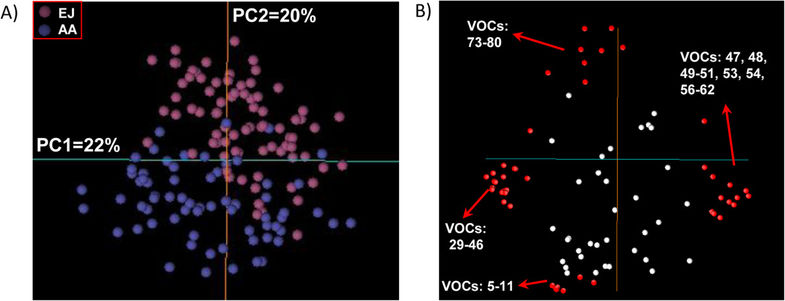Ver ítem
- xmlui.general.dspace_homeCentros Regionales y EEAsCentro Regional Buenos Aires NorteEEA San PedroArtículos científicosxmlui.ArtifactBrowser.ItemViewer.trail
- Inicio
- Centros Regionales y EEAs
- Centro Regional Buenos Aires Norte
- EEA San Pedro
- Artículos científicos
- Ver ítem
The peach volatilome modularity is reflected at the genetic and environmental response levels in a QTL mapping population
Resumen
Background: The improvement of fruit aroma is currently one of the most sought-after objectives in peach breeding programs. To better characterize and assess the genetic potential for increasing aroma quality by breeding, a quantity trait locus (QTL) analysis approach was carried out in an F1 population segregating largely for fruit traits.
Results: Linkage maps were constructed using the IPSC peach 9 K Infinium ® II array, rendering dense genetic maps,
[ver mas...]
Background: The improvement of fruit aroma is currently one of the most sought-after objectives in peach breeding programs. To better characterize and assess the genetic potential for increasing aroma quality by breeding, a quantity trait locus (QTL) analysis approach was carried out in an F1 population segregating largely for fruit traits.
Results: Linkage maps were constructed using the IPSC peach 9 K Infinium ® II array, rendering dense genetic maps, except in the case of certain chromosomes, probably due to identity-by-descent of those chromosomes in the parental genotypes. The variability in compounds associated with aroma was analyzed by a metabolomic approach based
on GC-MS to profile 81 volatiles across the population from two locations. Quality-related traits were also studied to assess possible pleiotropic effects. Correlation-based analysis of the volatile dataset revealed that the peach volatilome is organized into modules formed by compounds from the same biosynthetic origin or which share
similar chemical structures. QTL mapping showed clustering of volatile QTL included in the same volatile modules, indicating that some are subjected to joint genetic control. The monoterpene module is controlled by a unique locus at the top of LG4, a locus previously shown to affect the levels of two terpenoid compounds. At the bottom of LG4, a locus controlling several volatiles but also melting/non-melting and maturity-related traits was found, suggesting putative pleiotropic effects. In addition, two novel loci controlling lactones and esters in linkage groups 5 and 6 were discovered.
Conclusions: The results presented here give light on the mode of inheritance of the peach volatilome
confirming previously loci controlling the aroma of peach but also identifying novel ones.
[Cerrar]

Autor
Sanchez, Gerardo;
Martinez, José;
Romeu Santacreu, José Francisco;
García Brunton, Jesús;
Monforte Gilabert, Antonio J.;
Badenes, María Luisa;
Granell Richart, Antonio;
Fuente
BMC Genomics 14. (May 2014)
Fecha
2014-05-19
ISSN
1471-2229
Formato
pdf
Tipo de documento
artículo
Palabras Claves
Derechos de acceso
Abierto
 Excepto donde se diga explicitamente, este item se publica bajo la siguiente descripción: Creative Commons Attribution-NonCommercial-ShareAlike 2.5 Unported (CC BY-NC-SA 2.5)
Excepto donde se diga explicitamente, este item se publica bajo la siguiente descripción: Creative Commons Attribution-NonCommercial-ShareAlike 2.5 Unported (CC BY-NC-SA 2.5)


